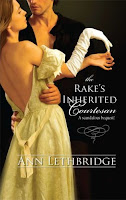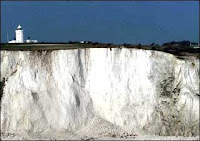A Must-read Memoir, a Magazine, and a Silk Loom
Hi everyone! Wonderful to be here, and to be able to talk about the background and research for my current Harlequin Historicals trilogy, The Aikenhead Honours, published in March/April/May! (His Cavalry Lady, His Reluctant Mistress, His Forbidden Liaison). Like many authors of historicals, I am absolutely fascinated by history and by the people and incidents I stumble across in my research. This trilogy started because of those happy accidents.
 My first piece of luck came when I was searching the British Library’s catalogue for first-hand accounts of the Napoleonic Wars. One search produced the title, “The Cavalry Maiden, Journals of a Female Russian Officer in the Napoleonic Wars.” It sounded irresistible. I’d heard of women serving in the military, especially the navy–but in the cavalry? And as an officer? That was the first book I ordered for my next trip to the Library!
My first piece of luck came when I was searching the British Library’s catalogue for first-hand accounts of the Napoleonic Wars. One search produced the title, “The Cavalry Maiden, Journals of a Female Russian Officer in the Napoleonic Wars.” It sounded irresistible. I’d heard of women serving in the military, especially the navy–but in the cavalry? And as an officer? That was the first book I ordered for my next trip to the Library!
And there she was, Nadezhda Durova, a Russian gentlewoman who spent nearly 10 years in the Russian light cavalry during the Wars, some of them as a common soldier. Later, she was decorated for bravery and commissioned by the Tsar himself. How could a woman live and fight alongside men without giving herself away? Admittedly, she was not particularly good-looking, if this portrait is a true likeness. On the other hand, she was much mocked for her lack of beard which could have given rise to suspicions. I think her success may have been partly because she was a consumate horsewoman and also totally fearless in battle. Perhaps her comrades could not imagine such qualities in a woman?
Rumors grew in the army of a fiercely brave woman, but it seems no one linked them with Durova. In her memoir, she writes with some glee of an encounter with a comrade who swore he had seen the fabled female soldier and would instantly recognize her! Durova, of course, made sure she sounded suitably admiring of her comrade’s cleverness and kept her secret to herself. How could I possibly pass on a heroine like that?
So, I had a basis for a heroine, but I had no hero, no background, and no plot! That was when I happened on my second piece of luck. I was back in the Library, researching a totally different topic, when I came across a copy of the Gentleman’s Magazine which recounted the visit of the Allied powers to London in June 1814, following the defeat of Napoleon and his exile to Elba. One of those visitors was Tsar Alexander of Russia, the same one who had given Durova her commission.
I couldn’t believe my luck! I had the background to a story and a basis for bringing my cavalry lady to London for an encounter with my hero. One slight problem–I didn’t have a hero!
He took a while to come onstage. I had all sorts of ideas and none of them worked. Then, one day, during a boating holiday in France, (with nothing for me to do, since the boat was marooned by floods which had broken all the locks), the hero of His Cavalry Lady appeared out of my subconscious, fully formed, as Dominic, Duke of Calder, government spy. What’s more, he brought two younger brothers with him! Suddenly, my story became a trilogy, the stories of the Aikenhead brothers, Dominic, Leo, and Jack.
 It took me 2 years to write the books, much longer than usual. Why? Because I had underestimated how difficult it is to write romance centered around so much real history, and so many real places and real characters. If you read the stories, you’ll see that they are full of historical figures, from the Prince Regent and his wife and daughter, to most of the crowned heads of Europe, their families and advisors. They’re not just background–they are actors in the story. I was also using some settings I hadn’t visited, like St. Petersburg and Vienna. I needed to know what these people looked like, how they behaved, the layout of their palaces, and a thousand other details. I had to interweave my stories around their travels and their politics.
It took me 2 years to write the books, much longer than usual. Why? Because I had underestimated how difficult it is to write romance centered around so much real history, and so many real places and real characters. If you read the stories, you’ll see that they are full of historical figures, from the Prince Regent and his wife and daughter, to most of the crowned heads of Europe, their families and advisors. They’re not just background–they are actors in the story. I was also using some settings I hadn’t visited, like St. Petersburg and Vienna. I needed to know what these people looked like, how they behaved, the layout of their palaces, and a thousand other details. I had to interweave my stories around their travels and their politics.
I was probably mad to start on this, but once I had, I was truly hooked. I read books, and memoirs, and letters. I studied maps of St. Petersburg and Vienna dating from 1810-1820. They didn’t tell me enough, so I arranged to visit both cities so that I could get the feel of the atmosphere and the grandeur. The sort of thing you can see in this picture of St. Petersburg.
I worked out detailed daily timelines for where each of the historical characters was during the year from summer 1814 to the Battle of Waterloo in 1815, and I discovered that historical characters are remarkably contrary; they’re rarely where a romance writer needs them to be for the sake of her story. What’s more, the sources often disagree about key dates.
 But historical sources also produce “Eureka!” moments. When I was working on the second book, His Reluctant Mistress, which is set at the Congress of Vienna, I had no idea how I was going to end it. First, the diary of a minor civil servant produced a reference to Beethoven’s Fidelio, which provided an essential hook for my plot, since my heroine, the “Venetian Nightingale,” has the finest singing voice in Europe. Then the Gentleman’s Magazine came to my rescue again. In an edition dating from early 1815, I found a wonderful historical incident that was exactly what I needed for Leo and Sophie.
But historical sources also produce “Eureka!” moments. When I was working on the second book, His Reluctant Mistress, which is set at the Congress of Vienna, I had no idea how I was going to end it. First, the diary of a minor civil servant produced a reference to Beethoven’s Fidelio, which provided an essential hook for my plot, since my heroine, the “Venetian Nightingale,” has the finest singing voice in Europe. Then the Gentleman’s Magazine came to my rescue again. In an edition dating from early 1815, I found a wonderful historical incident that was exactly what I needed for Leo and Sophie.
It happened in the beautiful palace of Schonbrunn, which you can see here. I won’t tell you what it is, though, since I don’t want to spoil the story! I discovered later that modern historians reckon the incident never actually happened. They may be right, but it was too good to miss. I used it anyway!
 I said at the beginning of this blog that my trilogy was based on 3 happy accidents. Here’s the third: Some years ago I spent a long weekend in Lyons, the centre of the French silk-weaving incident. It was cold and wet most of the time, but I’d have visited the indoor exhibitions anyway. Two things really grabbed me. The Lyons silk museum, full of background detail on the silk industry and amazing examples of the silk weavers’ art; and a real-life demonstration of silk making on a hand loom, in a workshop in the oldest part of Lyons.
I said at the beginning of this blog that my trilogy was based on 3 happy accidents. Here’s the third: Some years ago I spent a long weekend in Lyons, the centre of the French silk-weaving incident. It was cold and wet most of the time, but I’d have visited the indoor exhibitions anyway. Two things really grabbed me. The Lyons silk museum, full of background detail on the silk industry and amazing examples of the silk weavers’ art; and a real-life demonstration of silk making on a hand loom, in a workshop in the oldest part of Lyons.
The weaver was making a glorious dusky pink velvet shot through with real gold thread. It was destined for one of the Paris couture houses, though he wouldn’t tell me which one. I could see the process was elaborate and painstaking, but I was astonished to learn that it took 3 days to weave just one metre of this sumptuous cloth. No wonder Paris couture costs a fortune! The weaving image stayed with me. I knew I’d have to use it in a book someday. Also the medieval part of Lyons is stunningly atmospheric and would make a wonderful setting for a novel. But I had no idea then how I would use it. I knew it would pop up again when I was ready for it.
And it did! In the third book, His Forbidden Liaison, the Duke of Wellington sends Jack and his friend Ben Dexter on a spying mission to France early in 1815. They’re caught up in the 100 Days, following Napoleon’s escape from Elba. Napoleon’s route to Paris will take him to Lyons, so my heroes must go there, too. They wouldn’t make it without help from Marguerite Grollier, who is–surprise!–a silk weaver from Lyons with many secrets of her own.
In case you’re wondering, Ben isn’t left out. He, too, discovers what it is to be wrapped in the silk weaver’s web–not by Marguerite, but by her sister Suzanne. Their story will be an “Undone”e-story in July, His Silken Seduction.
So you see that for a historical romance author, research is a pleasure that is never wasted!
For more information on Joanna and the Aikenhead Trilogy, visit her website!












